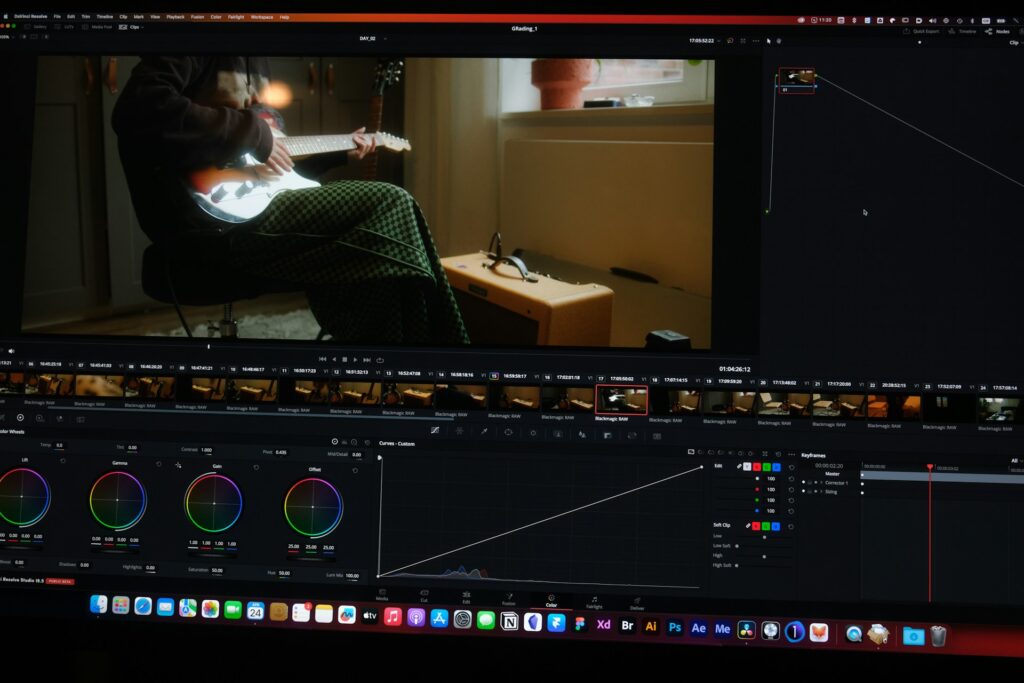You’ve got dreams of a million-dollar business, right? And maybe you think you need a huge team or a fat stack of cash to make it happen.
Here’s the thing, you don’t. AI flips the whole idea on its head. You can actually build a thriving business, maybe even hit that $1M mark, all by yourself.
A lot of folks see AI and get nervous. They think it’s a threat. But imagine flipping that story. Could AI be your smartest business partner? That’s exactly what this guide is about.
No endless lists of tools, no fluff.
Just simple, practical ways to use AI to find ideas, create products, and reach customers. Let’s break it down and see how to build a successful AI business from scratch.
Contents
1. Validate Your Niche Idea Before You Build

Everyone likes to say, “Ideas don’t matter, execution does.” That’s only half true.
The right idea is gold, especially now, because AI lets you whip up almost anything super fast. The tricky part is finding a real problem people actually care about.
Start by spotting problems worth solving. Look for niches people are complaining about online: Reddit, Facebook groups, wherever people hang out and vent.
What keeps coming up? What’s missing? AI can even help scan these platforms and pull out trends for you.
For example, take “cemetery software.” Many small cemeteries still use paper records. Digitizing that is an obvious pain point. An AI tool even pegged that market at $320 million. That’s the kind of concrete problem you want to find. That’s your foundation.
Here’s where most people trip up. They get excited and dive straight into building. That “vibe coding” feels productive, but it wastes time. AI makes building easy, sure, but fixing AI’s mistakes is a nightmare. Instead, validate first.
Start with a strategy. Don’t code yet. Use AI to craft a launch plan. Feed your niche idea into ChatGPT, Claude, or Gemini and ask it to draft a go-to-market plan.
Then spend 20-30 minutes tweaking it. Inject your own ideas so it feels like yours. Don’t just ask once; have a conversation with the AI.
Next, cross-check your plan across multiple AI models. It’s like doing quick market research without leaving your desk.
Then step away. Grab a notebook, sketch out the idea, the plan, the minimum viable product. Make it real in your head before touching code.
Finally, build small. Start with a simple landing page. Drive real traffic. See if people actually sign up before you build the full thing.
Remember Instagram? It started as a Foursquare clone. Your first idea is rarely the million-dollar one.
This validation process is your compass for navigating the messy middle. Nail this, and you’re on your way to creating a successful AI business.
Also Read: Build Your First AI Assistant from Scratch with ChatGPT
2. Build for the New “Operating System”: AI Chat Apps

Think about how you get information today. Do you scroll through pages of websites, or do you just ask an AI chatbot and get a direct answer?
The web is changing. Old-school websites feel like dusty libraries. Chat is becoming the main interface.
Here’s why it matters: users who come through chat convert four to twelve times better. They’ve already done the thinking. Your website (or app) just needs to handle the final step, the actual transaction. That’s huge.
OpenAI even wants ChatGPT to be the next operating system, and it already has hundreds of millions of users.
So the play is simple: build apps for the ChatGPT app store. That’s where the opportunity is.
The trick is thinking like this: your app should answer specific, high-intent requests. Stuff like “Help me find affordable daycare” or “Plan my trip to Italy.” To win, your app needs to:
- Solve real problems that ChatGPT can’t handle on its own.
- Be visual and interactive, not just text.
- Be designed for chat from the ground up. A chat app isn’t just a web app in a different wrapper; it’s a different experience entirely.
Now, building your own hit app has risks. OpenAI controls the store, and the market can be tricky. Lower-risk way to play? Start a service business building ChatGPT apps for other companies.
Think about it like web design 2.0. Just as web designers built websites for clients, you can build AI apps for local businesses, startups, or even bigger companies. That service model can get you to a serious six-figure or even seven-figure business without all the risk of creating a hit app yourself.
This is another clear path to creating a successful AI business. You’re basically surfing the wave of chat as the new interface instead of fighting the old web.
3. Use AI Video to Build an Audience First

Step three flips the usual script. Instead of building a product first, build an audience. Learn the new wave of AI video tools and use them to grab attention in a niche you care about. The idea is simple: attention is the new currency.
Greg Eisenberg calls it the ACP Funnel:
- Audience: Use AI-generated videos to get people to notice you.
- Community: Turn that audience into an engaged group.
- Product: Once you have their trust, sell them something tailored to their needs.
Here’s how you actually make scroll-stopping AI videos:
Script: Use ChatGPT or Claude to draft scripts. Focus on hooks, humor, memorable characters, or surprise twists. Keep tweaking until it feels sharp.
Image/Character Generation: Use an AI image tool to create consistent visuals. Consistency builds recognition.
Storyboarding: Arrange your visuals in something like Figma. Map out the flow before you dive in.
Video Generation: Combine your images and script lines using an AI video generator. Experiment until the style clicks.
Edit: Stitch it all together into a polished video.
Don’t just churn out random viral clips. Focus on a niche you actually care about and make high-quality, targeted content. That audience is your real asset.
Once you’ve got it, you can introduce products or services they actually want. This audience-first approach is a smart, sustainable path to building a successful AI business.
Related Articles:
- I Put ChatGPT Atlas and Perplexity Comet Browser to the Test – Here’s the Real Winner!
- 6 Game-Changing ChatGPT Agents That 99% of People Don’t Know About
- ChatGPT Masterclass: Here Are 21 of the Best Free ChatGPT Courses You Can Take Online
- These Are My 10 Favorite ChatGPT Prompts That’ll Instantly Make You a Power User
- The Ultimate ChatGPT Glossary: 60 Essential AI Terms Everyone Should Know
Your Expertise + AI Leverage
Here’s the common thread through all three paths: your expertise plus AI’s leverage. That’s the real engine.
Niche Validation: AI becomes your research assistant and strategist. It helps you spot and test ideas way faster than you could alone.
Chat Apps: AI gives you the platform and tools to build for this new chat-first interface.
AI Video: AI turns into your creative studio, letting you make high-quality content and grow an audience at scale.
In every case, AI does the heavy lifting. You provide the direction, the niche know-how, and the judgment that machines can’t replicate.
The trick is learning how to prompt effectively: give AI context, define the persona it should adopt, break big tasks into smaller steps, and iterate on the results.
Think of it like this: AI is your power tool, but you’re the one holding it, aiming it, and deciding what to build. Your knowledge plus AI’s speed and scale. That’s the combo that actually creates a successful AI business.
Your Journey to Create a Successful AI Business Starts Now
So, can you really go from zero to a million dollars with AI? Absolutely. These frameworks are showing exactly how new businesses are being built right now.
Whether you dive into validating niche ideas, building for the chat-based future, or mastering AI video to grow an audience, the core principles are the same:
Start lean. Test early.
Use AI smartly for research, creation, and getting your work out there.
Bring your own human expertise and perspective.
The tools are ready. The opportunity is huge. You don’t need a giant team or venture capital. What you need is a clear AI business strategy and the willingness to learn as you go.
Creating a successful AI business starts with one simple step: the first prompt. That’s all it takes to get the ball rolling!